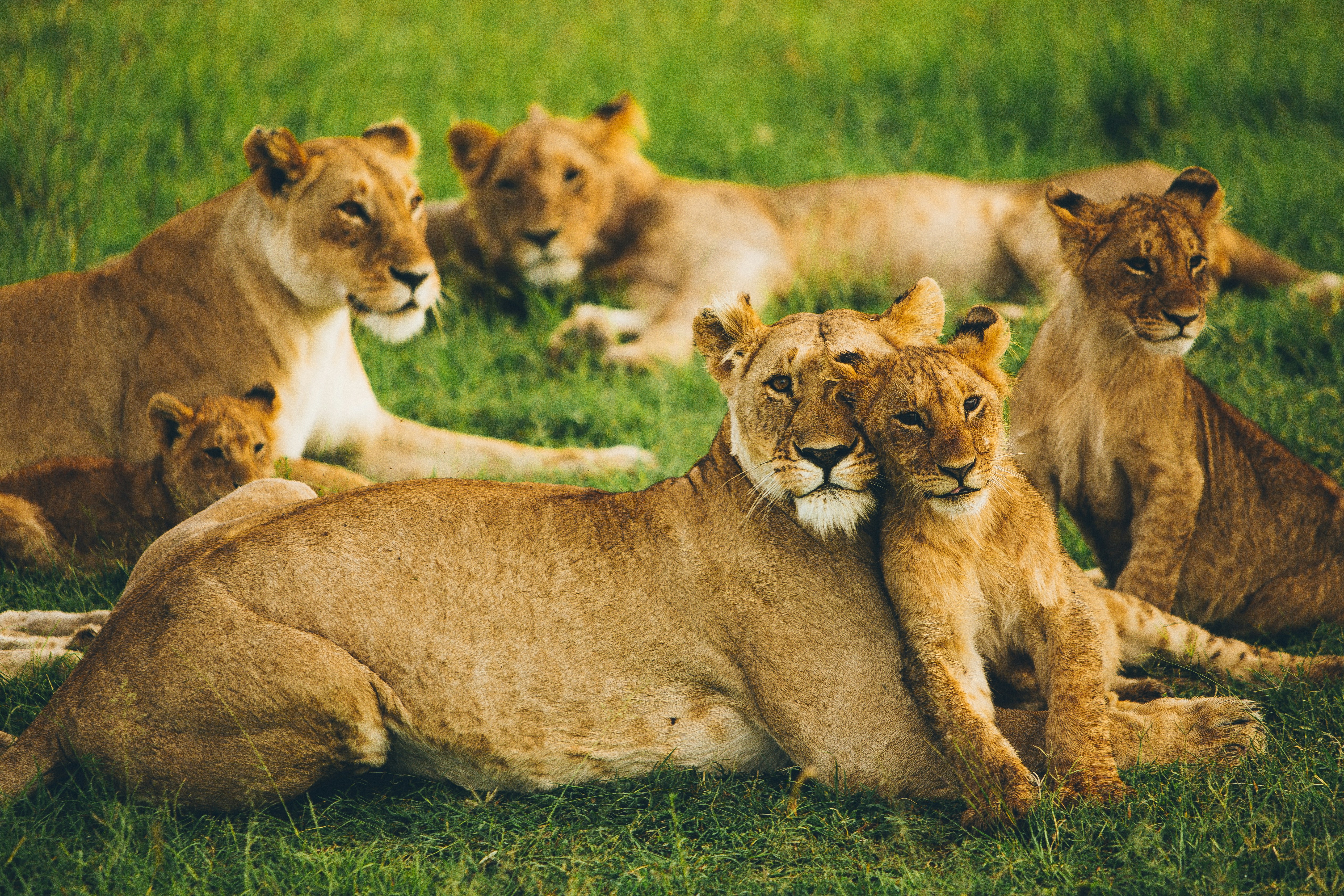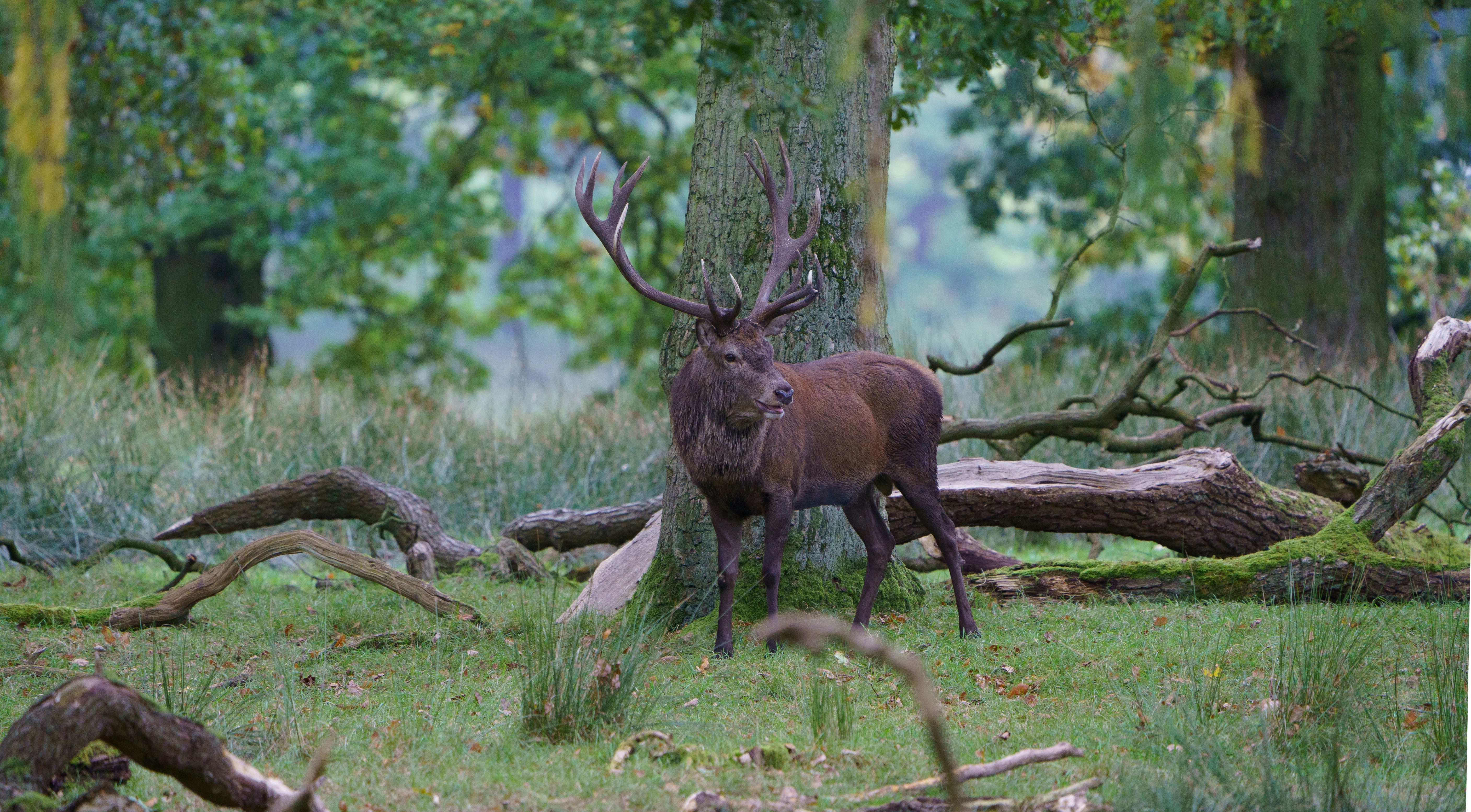Imagine you’re hiking deep in the wilderness, surrounded by the beauty of nature when suddenly, you come face to face with a wild animal. Your heart starts racing, and you find yourself unsure of what to do next. In this article, we will provide you with some essential tips on how to handle such a situation, ensuring your safety and the well-being of the animal. So, if you ever find yourself in this challenging scenario, keep reading to learn how to react calmly and responsibly.
Understanding Basic Safety Precautions
When venturing into the wilderness, it is crucial to understand and implement basic safety precautions to ensure your own safety as well as the well-being of the wild animals you may encounter.
Know the potential wildlife in the area
Before embarking on your wilderness adventure, take the time to research and familiarize yourself with the potential wildlife you may come across in the specific area you are visiting. Different regions have different species, and understanding the animals that inhabit the area will help you better navigate encounters and respond appropriately.
Pack appropriately for your trip
Packing the right gear and supplies is essential for any outdoor excursion. It is important to pack according to the specific needs of your trip, including appropriate clothing, gear, and food. Additionally, consider bringing safety supplies such as a first aid kit, a whistle, and bear spray or deterrents if necessary. By being prepared, you can more effectively handle any unexpected situations that may arise during your wilderness experience.
Never approach or feed a wild animal
While encountering wild animals can be an incredible experience, it is imperative to remember that they are, in fact, wild. Approaching or attempting to feed a wild animal can be dangerous for both yourself and the animal. Wild animals are naturally wary of humans and may perceive your approach as a threat, potentially resulting in an aggressive response.
Identifying Different Species of Wild Animal
Being able to identify different species of wild animals is a fundamental skill when it comes to outdoor exploration. Understanding their behavior and characteristics can help you navigate encounters and ensure your safety.
Understanding difference in behavior between predator and prey
Predators and prey animals have distinct behaviors that can help you differentiate between the two. Predators, such as wolves or mountain lions, exhibit behaviors like stalking, pouncing, or aggressive postures. On the other hand, prey animals, like deer or rabbits, tend to be more skittish and exhibit behaviors like running away or freezing in place when they sense danger.
Identifying the animal by tracks, scat, or other signs
One of the best ways to identify a wild animal is through tracks, scat, or other signs they leave behind. By learning to recognize these signs, you can determine the presence of various species. Pay attention to the size, shape, and patterns of tracks, as well as the characteristics of scat, such as color and texture. These clues can help you identify which animals are present in the area.
Recognizing specific behaviors for common animals
Familiarize yourself with the specific behaviors of common animals in the wilderness. For example, bears may display signs of aggression by huffing, popping their jaws, or swaying their heads. Recognizing these behaviors can help you interpret the intentions of the animal and respond accordingly. Take the time to research and understand the behaviors of the specific wildlife you may encounter, ensuring a safer and more enjoyable experience in the wild.
Coping with Predator Encounters
Encountering predators in the wilderness can be a thrilling yet nerve-wracking experience. Knowing how to behave and react in such encounters is crucial for your safety and the well-being of the animals.
How to behave around carnivores
When encountering carnivores such as bears, wolves, or big cats, it is essential to remain calm and avoid actions that may be perceived as threatening. Stand tall, make yourself appear larger by raising your arms and opening your jacket if wearing one, and avoid direct eye contact. Back away slowly and avoid turning your back on the animal. It is important not to run, as this may trigger the predatory instinct of the animal.
Specific tips for dealing with bears, wolves, etc.
Different species of predators may require different strategies for dealing with encounters. For example, when encountering a bear, it is crucial to avoid surprising or cornering them. Keep your distance, speak calmly, and slowly retreat to a safe area. In the case of a wolf encounter, maintain eye contact, make noise, and appear dominant. Understanding the specific behaviors and characteristics of different predators will guide you in appropriately responding to their presence.
Defending yourself in an aggressive encounter
While avoiding aggressive encounters with predators is the goal, it is crucial to know how to defend yourself in such situations. It is recommended to carry bear spray or deterrents when in areas with bear populations. If physically attacked, fight back with any available means, focusing on the animal’s vulnerable areas such as eyes, nose, or throat. Remember, the goal is to deter the animal and protect yourself, not to harm or kill it.
Maintaining Distance from Prey Animals
Prey animals such as deer, moose, or elk may seem docile and harmless, but it is essential to respect their space and maintain distance to avoid provoking aggressive behavior.
Why you must not approach deer, moose, etc.
Approaching prey animals may trigger a defensive response, especially if they feel threatened or cornered. These animals may have powerful kicks or antlers that can cause severe injuries. By keeping a safe distance and respecting their natural habitat, you reduce the risk of harm to both yourself and the animals.
Signs that a prey animal feels threatened
Prey animals will typically exhibit certain signs when they feel threatened or uncomfortable. These signs may include becoming agitated, stomping the ground, snorting, or displaying defensive body language. If you observe these behaviors, it is crucial to back away slowly, giving the animal plenty of space to calm down and feel secure.
How to back away safely without provoking an attack
Should you find yourself in close proximity to a prey animal that is exhibiting signs of distress, it is important to back away calmly and slowly. Avoid sudden movements or loud noises that may startle the animal further. Give the animal a clear path to retreat if necessary and maintain a safe distance until it appears at ease again.
Resolving Bird and Flying Animal Encounters
Encounters with birds and flying animals can be fascinating, but it is essential to understand how to interact safely to avoid disrupting their natural behaviors or provoking aggression.
Understanding Raptors and other predatory birds
Raptors, such as eagles, hawks, or owls, are impressive creatures with powerful hunting instincts. When encountering these birds, observe them from a distance and avoid disturbing their behavior or nesting areas. Raptors may become aggressive if they perceive a threat to their territories or young, so it is crucial to respect their space and keep a safe distance.
Safe practices around nesting grounds
During breeding seasons, many bird species establish nesting grounds to raise their young. It is crucial to be aware of these areas and exercise caution to avoid disturbing them. Keep your distance, resist the urge to approach or touch nests, and refrain from loud noises or sudden movements that may frighten or harm the young birds.
How to deter an aggressive bird
In rare cases, you may encounter an aggressive bird that perceives you as a threat. If a bird is repeatedly swooping or dive-bombing you, it is essential to protect yourself. Carry an umbrella or wear a hat to provide some protection, and calmly and confidently walk away from the area. Remember, these behaviors are usually just a defensive response, and leaving the area will likely resolve the issue.
Knowing how to Cope with Reptiles and Insects
Encountering reptiles and insects is a common occurrence in the wilderness. Being able to identify and cope with these creatures can help ensure your safety and prevent unnecessary harm.
Identifying venomous snakes and insects
Before entering a wilderness area, educate yourself on the venomous snakes and insects that may inhabit the region. Learn to identify their physical characteristics, such as coloration and patterns, and familiarize yourself with the potential habitats in which they may be found. This knowledge will enable you to take appropriate precautions and respond effectively if you encounter these creatures.
Coping with potential bites
If you are bitten by a venomous snake or insect, it is essential to remain calm and seek medical attention immediately. Keep the affected area still and below heart level to slow down the spread of venom. Avoid using tourniquets or attempting to suck out the venom, as these practices can cause further harm. By understanding common first aid measures for snake and insect bites, you can provide initial care while awaiting professional medical assistance.
Appropriate first aid steps after a venomous bite
After a venomous bite, it is crucial to monitor the bitten person’s vital signs and keep them as comfortable as possible while waiting for medical help. Apply a clean dressing to the wound to minimize the risk of infection and immobilize the affected limb if possible. The most important step is to seek immediate medical attention, as professional intervention is necessary for managing venomous bites effectively.
Establishing Camps in Wild Animal Habitats
When setting up camps in wild animal habitats, it is vital to minimize the potential risks and disturbances to both yourself and the animals that may inhabit the area.
How to minimize attracting animals to your campsite
To minimize attracting animals to your campsite, always store food, beverages, cooking utensils, and other scented items properly. Use bear-resistant containers or hang them from trees at a suitable height. Clean up any food debris or waste promptly, as the odor may lure animals closer to your camp. By practicing proper food storage and cleanliness, you can reduce the likelihood of unwanted wildlife encounters.
Safety precautions for food and trash storage
In addition to proper food storage, it is crucial to handle trash responsibly when camping in wild animal habitats. Keep trash securely sealed and stored away from your sleeping area. If needed, use bear-resistant or wildlife-proof trash containers to minimize the risk of animals becoming habituated to human food and trash.
Setting up camp in bear country
In areas known to have bear populations, specific precautions are necessary to ensure safety while camping. It is recommended to set up camp at least 200 yards away from any bear activity, such as trails, foraging areas, or water sources. Cook and eat away from sleeping areas and store all scented items securely. By following these guidelines and being aware of bear behavior and habitats, you can reduce the chances of bear encounters near your campsite.
Reacting in Case of Injury or Attack
Despite taking precautions, accidents and attacks can still occur while in the wilderness. Knowing how to react swiftly and appropriately in such situations can greatly impact the outcome and potentially save lives.
Immediate first aid steps
In the event of an injury or attack, it is crucial to provide immediate first aid to the affected person. This may include controlling bleeding, stabilizing fractures, or providing CPR if necessary. Knowledge of basic first aid techniques and having a well-equipped first aid kit are essential for responding effectively to emergencies.
Signaling or reaching out for help
If faced with a severe injury or dangerous situation, it is important to signal for help. Make use of any available communication devices, such as cell phones or two-way radios, to contact emergency services. Additionally, use whistle signals or visual markers to attract attention from nearby individuals or rescue teams.
Stabilizing the injured person until help arrives
While waiting for professional help to arrive, it is crucial to stabilize the injured person to prevent further harm. Keep them comfortable and warm, provide reassurance, and avoid unnecessary movement that may worsen their condition. By staying calm and providing support, you can significantly improve the chances of a positive outcome until professional assistance arrives.
Understanding and Implementing Precautionary Measures
Taking the time to learn and implement precautionary measures can greatly enhance your safety and enjoyment in the wilderness. There are various training programs, certifications, and equipment available to help you better prepare for outdoor adventures.
Training and certifications you can complete beforehand
Consider completing wilderness training and certifications to enhance your skills and knowledge before venturing into the wilderness. Courses on outdoor survival, wilderness first aid, and wildlife encounter management provide valuable insights and practical techniques. Being better prepared through training can instill confidence and ensure a safer experience in the wild.
Equipment that can help deter wildlife
Certain equipment can effectively deter wildlife from approaching your campsite or personal space. Bear spray, for example, is a powerful deterrent that can help ward off aggressive bears or other large mammals. Additionally, ultrasonic animal repellents or motion-activated alarms can help deter smaller animals from encroaching on your camping area. Investing in such equipment can provide an extra layer of protection and peace of mind during your wilderness trips.
How to handle encounters with endangered or threatened species
Encounters with endangered or threatened species require special consideration. It is important to ensure minimal disturbance to their habitats and lifestyles. Respect designated protected areas and follow any guidelines or regulations in place. Admire these remarkable animals from a distance, avoiding actions that may disrupt their behavior or pose a threat to their survival. Remember, preserving the natural habitats and ecosystems is crucial for the long-term conservation of these species.
Educating Yourself for Future Trips
Continuing your education and expanding your knowledge about wildlife behavior and safety measures is essential, especially if you plan on undertaking more trips into the wilderness.
Resources for learning about wildlife behavior
There are numerous resources available to help you continue learning about wildlife behavior. Books, documentaries, online resources, and nature centers offer valuable information and insights into various species and their behaviors. Seek out reputable sources that provide accurate and up-to-date information, enabling you to deepen your understanding of the natural world.
Reflecting on any encounters you had and what you learned
After each wilderness trip, take the time to reflect on any encounters you had with wild animals and what you learned from them. Consider the actions you took or might have taken differently, and how you can improve your preparedness for future encounters. Reflecting on these experiences will not only help you grow as a wilderness traveler but also contribute to the overall conservation of wildlife and their habitats.
Organizations that offer wilderness survival training
If you are eager to delve deeper into wilderness survival and wildlife encounter management, consider seeking out organizations that offer specialized training. These organizations often provide hands-on experiences, practical skills, and expert guidance. Participating in such programs can not only expand your knowledge but also connect you with like-minded individuals who share a passion for the natural world.
In conclusion, understanding basic safety precautions, identifying different species of wild animals, responding to predator encounters, maintaining distance from prey animals, and knowing how to cope with encounters involving birds, reptiles, and insects are all crucial aspects of wilderness safety. Implementing precautionary measures, knowing how to react in case of injury or attack, and continuing to educate yourself contribute to a safer and more enriching wilderness experience. By respecting and appreciating the wildlife that shares our planet, we can coexist harmoniously and ensure the preservation of our natural resources for generations to come. Happy and safe wilderness adventures!



